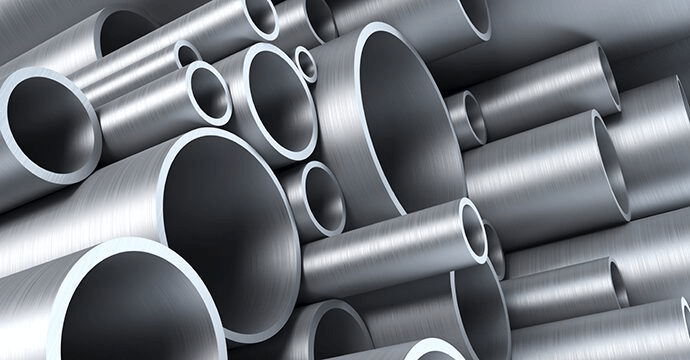Difference Between Iron and SteelThe main difference between Steel and Iron is in the fact that Iron is an element, whereas Steel, in its most basic form, is an alloy consisting of carbon and Iron. Many may think it is possible that "wrought iron" is, in a certain way, referred to as Steel, as "wrought" means forged. The term "forged" dates all the way to the beginnings of ironwork prior to the time it was done on an industrial scale. The initial refinement of iron ore was, according to modern standards, a simple procedure, which resulted in a cast iron that was brimming with defects and inclusions. The process of making "wrought iron", the thermomechanical process of forging cast Iron, was the method to further refine and enhance Iron to make it more effective as a material for structural construction. History of Iron ProductionThe production of Iron shifted from an artisanal craft to an industrial process. The name was changed for the final products of the smelting process -"smelting" is an act of heating iron-bearing mines to get the element out and then to melt it. After separation and melting, the iron liquid was poured into ingots or molds, often referred to as "sows", producing the first shape, "crude iron". Sows were then broken into smaller pieces to allow for further processing. In the process of breaking down, "sows" became smaller "pigs," which is where the expression "pig iron" originates from. A blacksmith will heat small ingots at the forge before hammering them to reduce the "pig iron" into the more practical material wrought Iron, crushing the voids and dispersing impurities. Although the impurities may not be eliminated, however, they could be redistributed by the forging procedure, which transformed large clusters of a contaminant into smaller ones that were less likely to affect its structure. Base metal. 
Creation of SteelIn the process of adding tiny amounts of carbon to the molten Iron, a steel alloy was made. Carbon atoms dispersed throughout the Iron disrupt and deform the crystal structure of the Iron, which enhances the mechanical properties. The subsequent thermal processing, like forging, was, and is still, the most important step to ensure that the casting shape of the initial ingot is changed, ensuring uniform mechanical properties through dispersing impurities into clusters or alloying elements and crushing voids which could make the final product less durable. The hot process of forging is also responsible for the recrystallization process of the alloy, resulting in the "fine grain" microstructure. This increases the Steel's toughness and fatigue properties. Steel Vs. Iron PropertiesSteel is more powerful than Iron (yield and ultimate tensile strength) and more durable than wide varieties of Iron, too (often measured by fracture toughness). The most commonly used kinds of Steel include less than .5 percent carbon by weight. Carbon additions with higher percentages increase strength but will cause the Steel to become brittle. Other elements that are commonly used in Steel are manganese, silicon, and sulfur. The type of Steel known as "alloy steel" may also contain molybdenum, nickel and chromium-vanadium, and molybdenum. Stainless Steel is a very popular low-carbon steel that has chrome. Every element added, even in small quantities, adds desirable properties to the alloy of Steel. If the recipe for the steel alloy is managed and the alloy is properly processed, an alloy comprised mainly of Iron is the extremely effective substance ever created. Iron, as well as Steel, comprise two distinct kinds of materials. However, Iron is the principal element in Steel too. The primary distinction between Steel and Iron is the fact that Iron can be described as an element, and Steel is an alloy made of Iron. Both of these materials are widely utilized in the manufacturing of various items at an industrial scale. Steel is actually an improvement that was made to make the use of Iron more attractive and durable. The quality of resistance to corrosion was the primary factor to be considered when determining the quality of Steel. But not all kinds of Steel have this characteristic. The Steel that exhibits this quality is referred to as "stainless steel.' Difference Between Iron and Steel
Next TopicDifference between
|
 For Videos Join Our Youtube Channel: Join Now
For Videos Join Our Youtube Channel: Join Now
Feedback
- Send your Feedback to [email protected]
Help Others, Please Share










